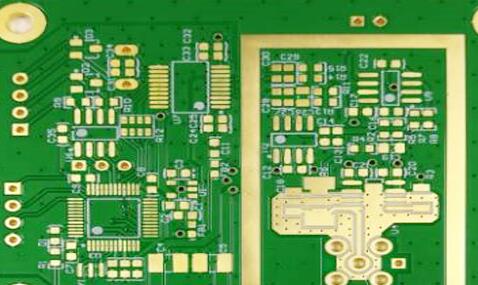Copper coating is an important component of the copper/nickel/chromium system for protective and decorative coatings. Flexible and low-porosity copper coatings play an important role in improving the adhesion and corrosion resistance between coatings. Copper coating is also used for local anti-seepage carbon, metallization of printed board holes, and as a surface layer for printing rollers. The colored copper layer after chemical treatment, coated with organic film, can also be used for decoration. At present, the most commonly used copper plating solutions are cyanide plating solution, sulfate plating solution and Pyrophosphate plating solution.

Copper plating, also known as copper precipitation or pore-forming (PTH), is a self-catalyzed Redox. Firstly, an activator is used to adsorb a layer of active particles on the surface of the insulation substrate, usually metal palladium particles. Copper ions are first reduced on these active metal palladium particles, and these reduced metal copper crystal nuclei themselves become the catalytic layer of copper ions, allowing the reduction reaction of copper to continue on the surface of these new copper crystal nuclei. Chemical copper plating has been widely used in our PCB manufacturing industry, and currently, the most common method is to use chemical copper plating for hole metallization of PCBs.
The process of copper plating PCB board
Firstly, we need to prepare the copper plating solution. The main components of the copper liquor are Copper(II) sulfate and Tartaric acid. This process requires strict reaction time and temperature, otherwise, it will result in an unusable copper solution.
Next, we need to preprocess the PCB board. The purpose of pre-treatment is to clean and activate the copper layer on the surface of the PCB board, which is the key to ensuring uniform copper plating on the PCB board surface.
3. Then, we need to immerse the PCB board in a copper plating solution. During this process, copper ions will gradually deposit on the surface of the PCB board, forming a uniform copper electrodeposition layer. This process requires controlling the deposition time and temperature to ensure the thickness and uniformity of the copper layer on the surface of the PCB board.
4. Finally, we need to perform cleaning and post-treatment. This process includes cleaning the PCB board, removing areas that have not been coated with copper, and post-processing operations such as protecting the PCB board from corrosion.
The Role of Copper Plating PCB Board
1. Copper electrodeposition can improve the mechanical strength of PCB boards. Copper is a metal with high elasticity and toughness, which can strengthen PCB boards.
2. Copper electrodeposition can improve the conductivity of PCB boards. Copper is an excellent conductive material that can improve the conductivity of PCB circuit circuits.
3. Copper electrodeposition can improve the corrosion resistance of PCB boards. The copper electrodeposition layer can effectively protect PCB boards from oxidation, corrosion, and other chemical reactions.
Process Technology for Electroplating Copper on PCB
1. Pickling
The purpose of pickling is to remove the oxide on the board surface and activate the board surface. The concentration is generally 5%, and some maintain it at around 10%, mainly to prevent water from entering and causing unstable sulfuric acid content in the tank liquid. During operation, attention should be paid to controlling the soaking time, which should not be too long to prevent oxidation of the board surface.
For acid solution, if it becomes turbid or has a high copper content after a period of use, it should be replaced promptly to prevent contamination of the electroplating copper cylinder and plate surface. The sulfuric acid used for pickling should generally be CP-grade sulfuric acid.
2. Preparation of plating solution\
Acid Copper(II) sulfate plating solution has the advantages of good dispersion and deep plating ability, high current efficiency, low cost, etc., which makes it widely used in the production of printed boards.
3. Full board copper plating
Also known as one-time copper plating. Its function is to protect the newly deposited thin layer of chemical copper. Full board electroplating refers to the process of using the entire printed board as the cathode after hole metallization. The copper layer is thickened to a certain extent through electroplating, and then the circuit pattern is formed through etching to prevent the product from being scrapped due to the thin chemical copper layer being etched off by subsequent processes.
Copper plating PCB board is a crucial step in PCB manufacturing. By plating copper, the mechanical strength, conductivity, and corrosion resistance of the PCB board can be ensured, thereby ensuring the quality and performance of the PCB board.